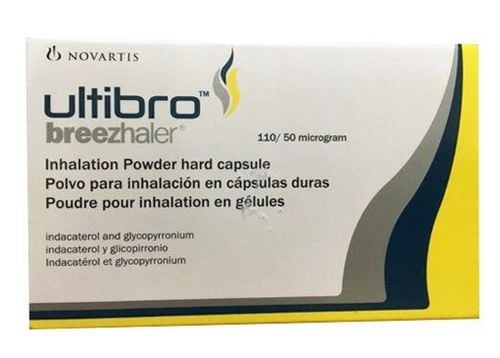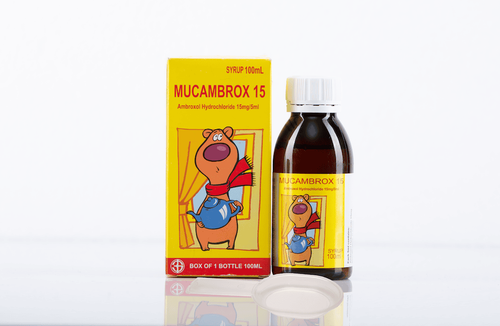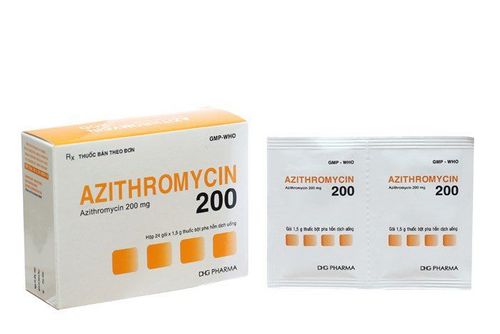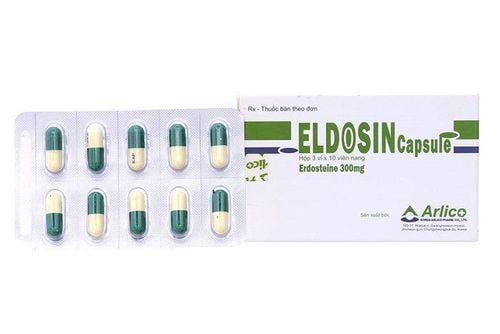This is an automatically translated article.
Carbocistein is a drug indicated in the treatment of respiratory diseases with thick sputum such as chronic obstructive pulmonary disease, bronchitis... The drug is prepared in many different concentrations and forms. suitable for a wide range of patients.
1. What is Carbocistein?
Carbocistein is a mucolytic drug, which has the effect of dissolving mucus and helping to reduce the viscosity of mucus in the lungs, facilitating the expulsion of sputum through the cough reflex.Carbocisteine is a substance that has been shown to affect the nature and amount of mucinous glycoproteins secreted by the respiratory mucosa in normal animal models and in bronchial models. Other studies in humans have demonstrated that carbocistein reduces goblet cell hyperplasia, whereby the drug plays an important role in the management of disorders characterized by abnormal mucus hypersecretion. .
The drug is prepared in different forms including:
Hard capsule: 200 mg, 375 mg, 500 mg, 750 mg. Solution form: 2g/100ml; 5g/100ml; 100 mg/5 ml; 250 mg/5ml, 750mg/10ml; 750 mg/ 15 ml Combination capsule: 500 mg/2 mg; 2g/0.05g With many different dosage forms, the drug can be used for many different ages.
2. Uses of Carbocistein
Carbocistein is used as adjuvant treatment to dissolve mucus in cases of respiratory tract disorders with excessive mucus secretion including:
Chronic Obstructive Pulmonary Disease (COPD). Acute bronchitis . Acute exacerbation of chronic bronchitis. Pneumonia . Pneumothorax. Note: Do not use the drug in the following cases:
Patients with hypersensitivity to Carbocistein or any other excipients in the drug. Do not use for patients with active gastric and duodenal ulcers. Because of the risk when taking mucolytic drugs can destroy the protective barrier (mucus) in the stomach lining. Not for use in children under 2 years of age.
3. Dosage and how to take Carbocisteine
How to use: Take orally with water, the drug should be taken after meals to avoid affecting the gastrointestinal mucosa. Depending on the dosage form, there are specific uses.
Dosage:
For adults: Initial dose is usually about 2250 mg Carbocisteine in divided doses, usually about 4 times, then reduced to 1500 mg daily also in divided doses when response is achieved. good clinical. For children: 20mg/kg in divided doses. Children 2-5 years old can take 62.5 -200 mg divided into 2-3 times / day. Children from 6-12 years old 250-300 mg / time and use 3 times a day. Children often use the form of syrup or powdered nuggets to drink. The duration of use of the drug is usually not more than 10 days.
Note: Specific dosage may be needed depending on the condition and progress of each patient.
4. Notes when using Carbocisteine
To use the drug safely, you need to note a few things:
It should be avoided when there is a history of allergy or hypersensitivity to any ingredient of the drug. When taking Carbocisteine drugs, there are usually few side effects, but in some rare cases it can also cause side effects such as digestive disorders, nausea, discomfort, gastrointestinal bleeding; increased secretion of bronchial mucus; Stevens-Johnson syndrome ; erythema multiforme; Hypersensitivity reactions with manifestations such as rash, hives, urticaria, dizziness, shortness of breath, swelling of the face, swelling of the throat... In case of serious side effects, the patient should be given immediate emergency care. , relatives should take the patient to the nearest medical facility for emergency treatment. Overdose may occur with gastrointestinal manifestations such as dyspepsia, abdominal pain. Depending on the symptoms and appropriate treatment, the patient may need gastric lavage and monitoring. For the preparation is sugar-free syrup: Carbocistein contains alcohol, so it should be noted that this preparation is not used for children under 18 years of age and especially in pregnant or lactating women and high-risk groups of patients. affected by alcohol such as patients with liver disease or edema. The drug should not be used for too long, more than 14 days without a suitable prescription from the treating doctor. This is a form of medicine that thins mucus or phlegm, but is not a cough suppressant. When used, the patient will sometimes increase the cough reflex to expel the mucus. However, the patient should not be too worried because when the phlegm is gone, the body will reduce the cough on its own and do not use it with cough suppressants. For women in pregnancy, there is currently no scientific evidence that the drug is safe for use in pregnant women. Therefore, it is best not to take the drug, especially during the first 3 months of pregnancy. As for breast-feeding women, because the drug has not been recorded in breast milk, it should not be used to ensure the safety of nursing infants. Do not use the medicine in case of signs of damage and expiry date. Store the medicine in a cool place, below 30 degrees Celsius, avoid moisture, avoid direct light. It is necessary to read carefully how to store each different product. Because it may not be exactly the same. Above is information about the uses of Carbocistein, how to use and note when using the drug. To make sure it is safe to take your medicine, always consult your doctor or pharmacist to avoid any adverse effects on your body.
Follow Vinmec International General Hospital website to get more health, nutrition and beauty information to protect the health of yourself and your loved ones in your family.
Please dial HOTLINE for more information or register for an appointment HERE. Download MyVinmec app to make appointments faster and to manage your bookings easily.













